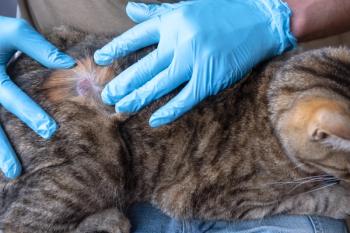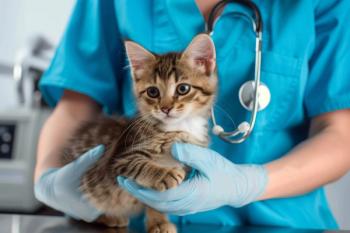
The Triennial Report
When it comes to competitive pressure, just look down the street
National Report — Traditional veterinary hospitals remain the source of the most competitive business pressure, according to a 2009 DVM Newsmagazine survey.
Coming in a close second: Internet sales Web sites, which ranked as the top threat in 2006. The results were gathered as the U.S. recession widened in late 2008 through January 2009. About 42 percent of the respondents viewed their geographic location as "highly competitive." Nearly half called it "somewhat competitive."
Table 1: Competition: Measuring the threat
This survey sought to gauge the attitudes of veterinarians on a variety of timely issues, including competition, the state of the economy and practice trends.
Table 2: Competitive edge
When asked how they rated their facility and medical equipment in comparison to other practices in the area, 38 percent said they were about the same, 55 percent said they were better and 8 percent said they were worse. As might be expected, larger practices rated their facilities higher than smaller practices. For example, nearly 70 percent of practices grossing $1.5 million to $1.7 million say their facilities are superior to competing practices. Just over 40 percent of respondents in facilities grossing $250,000 to $499,000 said the same.
Table 3: Competitive risk
Most veterinarians did not report expansion within their communities, either. In fact, 62 percent say that no new practices have opened within five miles of their clinic in the last three years.
Table 4: Top areas of specialist referrals
The sentiment extended to hiring, too. In fact, 64 percent of the veterinarians report they do not plan to hire a new associate DVM in the next two years. Supply, however, is not a problem for 70 percent of the respondents.
Table 5: Quest for ownership
Thirty percent of the survey respondents said they cannot find a qualified associate in their area.
Table 6: Hiring outlook
The average number of positions filled in 2008 was 2.9 per clinic, while the average number created was one.
When associates were asked about their interest in ownership of a veterinary hospital or clinic, the numbers dropped again.
Table 7: Vet power
In fact, nearly 43 percent of associate DVMs want a piece of the practice, which is nearly a 10 percent decline from 2006.
Table 8: Delegate or control?
Most veterinarians (55 percent) perceive their workload as just right. About one-quarter believe they are working too much and the other 21 percent say they don't have enough work. On average, veterinarians are working 46 hours a week.
Yet, lack of a work/life balance and not having enough money ranked as the top two greatest professional concerns for veterinarians (Table 9).
When asked about services, veterinarians report they are performing more diagnostics, dentistry, diagnostic imaging and surgery compared to three years ago.
Table 9: Work/life balance
Nearly 70 percent of respondents say they plan to stay in private practice their entire career.
Only 7 percent of them say they plan to leave.
Leaders speak out
"There is no better time to be a veterinarian than right now. As evidenced by the opportunities available in all sectors across our profession — small animal, food animal, equine, pharmaceutical, Homeland Security, public health, education and research (both human and veterinary) — the sky's the limit for veterinarians. In our practice, utilizing research, the most advanced evidence-based medicine and technology, we see pets living longer, healthier lives. We also see more clients seeking advanced care for their pets, as the human-pet bond becomes stronger. As we move into the future and the importance of pets in society grows, we have an opportunity to raise the standards of the medicine we practice."
— JOHN PAYNE, PRESIDENT & CEO, BANFIELD, THE PET HOSPITAL
Newsletter
From exam room tips to practice management insights, get trusted veterinary news delivered straight to your inbox—subscribe to dvm360.




